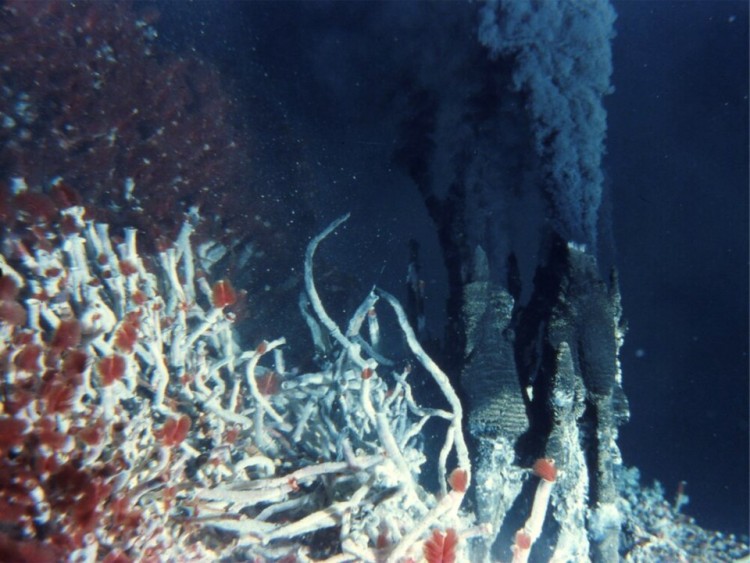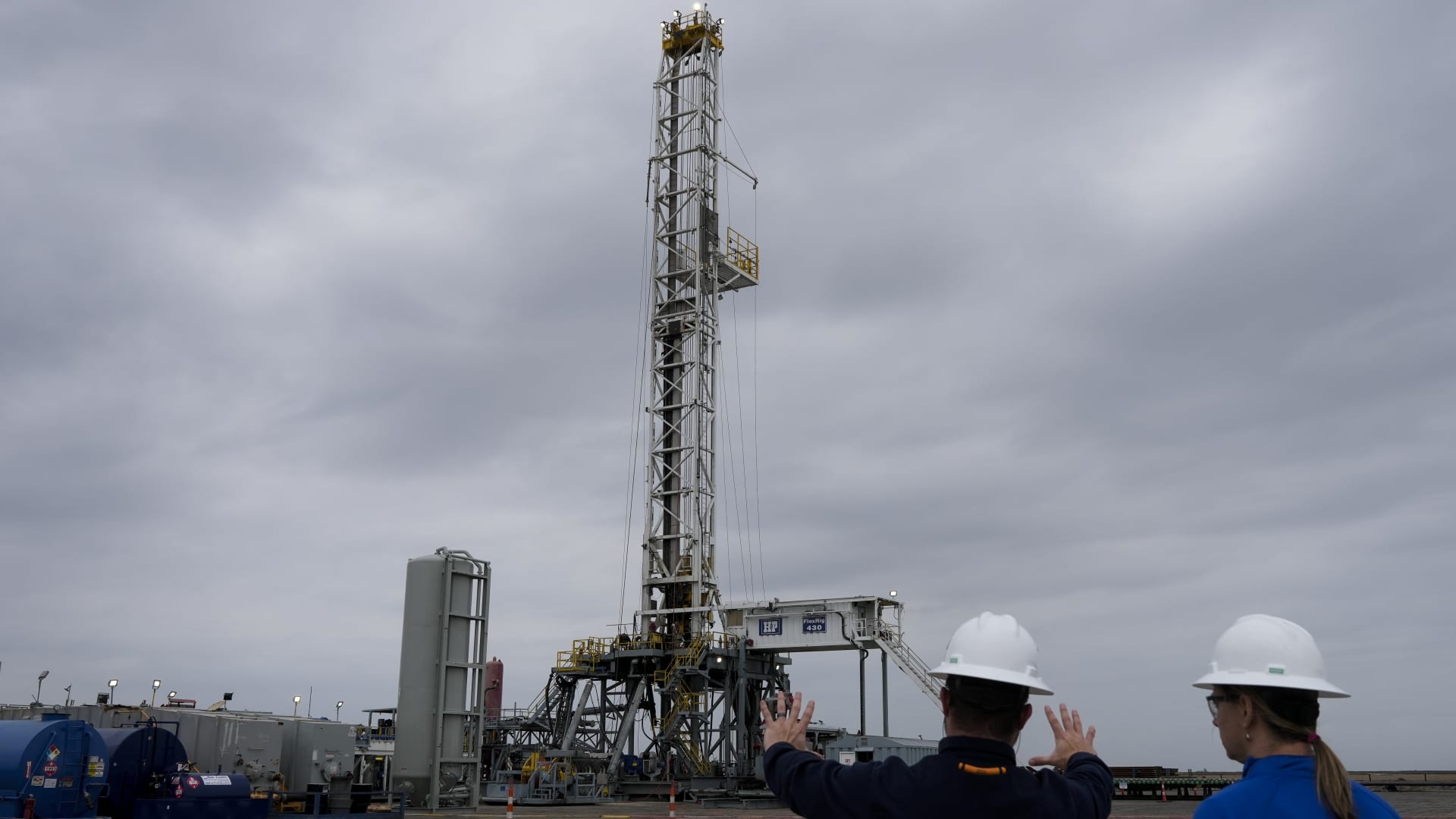NOAA: 2022 Sea Level Rise Technical Report & Useful Interactive Tools

U.S. government researchers have published a comprehensive new report filled with information and maps that show high tide flooding along the Atlantic, Pacific, and Gulf coasts. The report covers that flooding will worsen, how it has, and the precise tools to see how it will continue (exponentially). Flooding is rising toward a nationwide average of 3 to 7 days per year by April 2023 and 45 to 70 days per year by 2050. According to the report, high tides driven by rising seas flooded coastal areas more than 500 times over the past year. High tide and coastal flooding now is more frequently troubling the Atlantic and Gulf coasts than they did in 2000.
The Sea Level Rise Technical Report provides the most up-to-date sea level rise projections available for all U.S. states and territories. This multi-agency effort is the first update since 2017. The technical report is the latest product of the Sea Level Rise and Coastal Flood Hazard and Tools Interagency Task Force and it has 23 co-authors, representing senior scientists and experts from academic institutions and the following agencies: NOAA, NASA, Environmental Protection Agency, U.S. Geological Survey, Federal Emergency Management Agency, Army Corps of Engineers.
The report supplies projections out to the year 2150 and information to help communities assess potential changes in average tide heights and height-specific threshold frequencies as they strive to adapt to sea level rise.
This report offers vivid datasets. Via the Sea Level Rise Scenario Tool, maps provide invaluable insight into where flooding risks are now and where they will grow. The Executive Summary of the report highlights the scene communities and ecosystems face.
Sea Level Rise Viewer
” data-medium-file=”https://cleantechnica.com/files/2022/08/NOAA-REPORT-1-400×219.png” data-large-file=”https://cleantechnica.com/files/2022/08/NOAA-REPORT-1-800×439.png” loading=”lazy” class=”wp-image-273686 size-full” src=”https://cleantechnica.com/files/2022/08/NOAA-REPORT-1.png” alt width=”1300″ height=”713″ srcset=”https://cleantechnica.com/files/2022/08/NOAA-REPORT-1.png 1300w, https://cleantechnica.com/files/2022/08/NOAA-REPORT-1-400×219.png 400w, https://cleantechnica.com/files/2022/08/NOAA-REPORT-1-800×439.png 800w, https://cleantechnica.com/files/2022/08/NOAA-REPORT-1-768×421.png 768w” sizes=”(max-width: 1300px) 100vw, 1300px”>
Screenshot of Sea Level Rise Viewer.
Sea Level Rise Viewer
” data-medium-file=”https://cleantechnica.com/files/2022/08/NOAA-R-400×222.png” data-large-file=”https://cleantechnica.com/files/2022/08/NOAA-R-800×444.png” loading=”lazy” class=”wp-image-273687 size-full” src=”https://cleantechnica.com/files/2022/08/NOAA-R.png” alt width=”1300″ height=”721″ srcset=”https://cleantechnica.com/files/2022/08/NOAA-R.png 1300w, https://cleantechnica.com/files/2022/08/NOAA-R-400×222.png 400w, https://cleantechnica.com/files/2022/08/NOAA-R-800×444.png 800w, https://cleantechnica.com/files/2022/08/NOAA-R-768×426.png 768w” sizes=”(max-width: 1300px) 100vw, 1300px”>
Screenshot of Sea Level Rise Viewer.
As I read through this report, I found many tools available for the visually oriented person to better assimilate climate information. I hope cities will use these to improve policies based on science, knowledge, and information (rather than vested interests trying to steady folks in denial). As an example, by using one of the varied tools — (NOAA) Adapting Stormwater Management for Coastal Floods — one can easily teach, even a child, how coastal homes face challenges and loss, and the risks of climate change years going forward.
What Contributes to Coastal Flooding?
Storm Surge
” data-medium-file=”https://cleantechnica.com/files/2022/08/Sea-Level-Rise.-400×251.png” data-large-file=”https://cleantechnica.com/files/2022/08/Sea-Level-Rise.-800×502.png” loading=”lazy” class=”size-full wp-image-273876″ src=”https://cleantechnica.com/files/2022/08/Sea-Level-Rise..png” alt width=”1020″ height=”640″ srcset=”https://cleantechnica.com/files/2022/08/Sea-Level-Rise..png 1020w, https://cleantechnica.com/files/2022/08/Sea-Level-Rise.-400×251.png 400w, https://cleantechnica.com/files/2022/08/Sea-Level-Rise.-800×502.png 800w, https://cleantechnica.com/files/2022/08/Sea-Level-Rise.-768×482.png 768w” sizes=”(max-width: 1020px) 100vw, 1020px”>
Sea Level Rise added.
As you can see above, via a “What Contributes to Coastal Flooding?” interactive graphic, you can more easily see and understand different contributing factors and what they lead to.
More resources from the report and tools:
One subsection helps ask and answer top real-world questions for individuals.
“How high does the water need to get before we have a problem?”
“When do we think that will happen?”
Breathe, the step-by-step process is not short, but with guidance from these tools, people can find real help. This can be done on an individual level, on a community level, or on an even larger state or federal level. Urban planners can use these tools, as can city councilors and common citizens.
“Using the information generated from the Quick Flood Assessment Tool in the ‘Assess Flood Risks‘ section and the methods presented in the ‘Analyze Stormwater Systems‘ section, coastal communities can make informed decisions about the current and future capabilities of their stormwater management systems in the face of coastal flooding.”
Highlights of the Executive Summary of the report on the scene communities and ecosystems face:
“This report and accompanying datasets from the U.S. Sea Level Rise and Coastal Flood Hazard Scenarios and Tools Interagency Task Force provide 1) sea level rise scenarios to 2150 by decade that include estimates of vertical land motion and 2) a set of extreme water level probabilities for various heights along the U.S. coastline. These data are available at 1-degree grids along the U.S. coastline and downscaled specifically at NOAA tide-gauge locations. Estimates of flood exposure are assessed using contemporary U.S. coastal flood-severity thresholds for current conditions (e.g., sea levels and infrastructure footprint) and for the next 30 years (out to year 2050), assuming no additional risk reduction measures are enacted.
“This effort builds upon the 2017 Task Force report (Sweet et al., 2017). In particular, the set of global mean sea level rise scenarios from that report are updated and downscaled with output directly from the United Nations Intergovernmental Panel on Climate Change (IPCC) Sixth Assessment Report (AR6; IPCC, 2021a), through the efforts of the NASA Sea Level Change Team; updates include adjustments to the temporal trajectories and exceedance probabilities of these scenarios based upon end-of-century global temperatures. As with the 2017 report, these global mean sea level rise scenarios are regionalized for the U.S. coastline. In addition, methodology supporting the U.S. Department of Defense Regional Sea Level (DRSL) database1 (Hall et al., 2016) is adapted for the extreme water level dataset newly developed for this report.
“This report will be a key technical input for the Fifth National Climate Assessment (NCA5). These data and information are being incorporated into current and planned agency tools and services, such as NOAA’s Sea Level Rise Viewer and Inundation Dashboard, NASA’s Sea Level Change Portal, and others. Although the intent of this report is not to provide authoritative guidance or design specifications for a specific project, it is intended to help inform Federal agencies, state and local governments, and stakeholders in coastal communities about current and future sea level rise to help contextualize its effects for decision-making purposes.”
Key Messages
The information is meant to inform federal agencies, state and local governments, and stakeholders in coastal communities about current and future sea level rise. Thus, it is meant to support more exacting and intelligent decision-making:
Key Message #1:
Multiple lines of evidence provide increased confidence, regardless of the emissions pathway, in a narrower range of projected global, national, and regional sea level rise at 2050 than previously reported (Sweet et al., 2017).
Key Message #2:
By 2050, the expected relative sea level (RSL) will cause tide and storm surge heights to increase and will lead to a shift in U.S. coastal flood regimes, with major and moderate high tide flood events occurring as frequently as moderate and minor high tide flood events occur today. Without additional risk-reduction measures, U.S. coastal infrastructure, communities, and ecosystems will face significant consequences.
Key Message #3:
Higher global temperatures increase the chances of higher sea level by the end of the century and beyond. The scenario projections of relative sea level along the contiguous U.S. (CONUS) coastline are about 0.6–2.2 m in 2100 and 0.8–3.9 m in 2150 (relative to sea level in 2000); these ranges are driven by uncertainty in future emissions pathways and the response of the underlying physical processes.
Key Message #4
Monitoring the sources of ongoing sea level rise and the processes driving changes in sea level is critical for assessing scenario divergence and tracking the trajectory of observed sea level rise, particularly during the time period when future emissions pathways lead to increased ranges in projected sea level rise.
4 Key Takeaways from the Report
1. The Next 30 Years of Sea Level Rise: Sea level along the U.S. coastline is projected to rise, on average, 10–12 inches (0.25–0.30 meters) in the next 30 years (2020–2050), which will be as much as the rise measured over the last 100 years (1920–2020). Sea level rise will vary regionally along U.S. coasts because of changes in both land and ocean height. Learn More
2. More Damaging Flooding Projected: Sea level rise will create a profound shift in coastal flooding over the next 30 years by causing tide and storm surge heights to increase and reach further inland. By 2050, “moderate” (typically damaging) flooding is expected to occur, on average, more than 10 times as often as it does today, and can be intensified by local factors. Learn More
3. Emissions Matter: Current and future emissions matter. About 2 feet (0.6 meters) of sea level rise along the U.S. coastline is increasingly likely between 2020 and 2100 because of emissions to date. Failing to curb future emissions could cause an additional 1.5 – 5 feet (0.5 – 1.5 meters) of rise for a total of 3.5 – 7 feet (1.1 – 2.1 meters) by the end of this century. Learn More
4. Continual Tracking: Continuously tracking how and why sea level is changing is an important part of informing plans for adaptation. Our ability to monitor and understand the individual factors that contribute to sea level rise allows us to track sea level changes in a way that has never before been possible (e.g., using satellites to track global ocean levels and ice sheet thickness). Ongoing and expanded monitoring will be critical as sea levels continue to rise. Learn More
Final Thoughts — Travel Through This Report, Consider The Tools, And Feel Better.
Every day, scientists, researchers, farmers, gardeners, and environmentalists are working hard, being kind, and finding solutions to our world’s climate and environmental crises.
A while back Scott Cooney wrote a great article to consider. An excerpt: “So it is with climate change. It’s complex. Understanding how carbon dioxide, methane, and other gases trap heat is not an easy thing to grasp on a global scale. Or understanding the heat produced by 7 billion people using internal combustion engines and the laws of thermodynamics … it’s complex.”
That said, I feel that taking a look at this report — for everyone who does so, child, adult, or urban planner — is a useful action. I can’t put it down. It has improved my mood amid the troubling news of this planet — because it’s usable, precise, informative, and filled with tools for solutions to infrastructure changes that need to be dealt with directly.
Yet, be aware of how rapidly the changes are occurring.
Major flooding in California’s #DeathValley stranded approximately 1,000 people, buried cars and shut down all roads into and out of the famously parched national park.
?: FOX5#Flood pic.twitter.com/oE8PS0GcKB— Wali Khan (12 August ? HBD M Arif) (@WaliKhan_TK) August 6, 2022
Bill, let’s give this kid some dap rather than traffic off his predicament for points. https://t.co/fB1hz7jDYA
— Scott Thill (@morphizm) August 9, 2022
All graphs and featured image courtesy of NOAA.
Photos courtesy of Carolyn Fortuna | CleanTechnica.
Appreciate CleanTechnica’s originality and cleantech news coverage? Consider becoming a CleanTechnica Member, Supporter, Technician, or Ambassador — or a patron on Patreon.
Don’t want to miss a cleantech story? Sign up for daily news updates from CleanTechnica on email. Or follow us on Google News!
Have a tip for CleanTechnica, want to advertise, or want to suggest a guest for our CleanTech Talk podcast? Contact us here.
Advertisement
This post has been syndicated from a third-party source. View the original article here.





